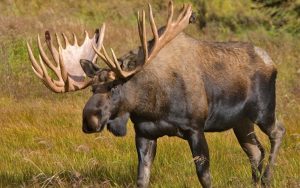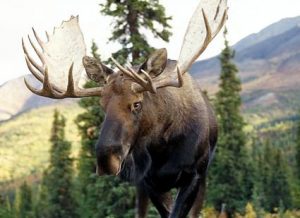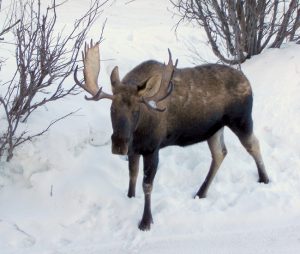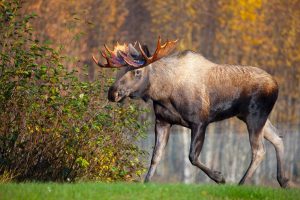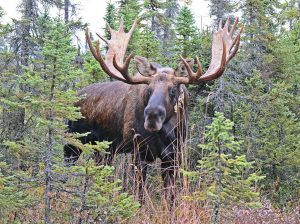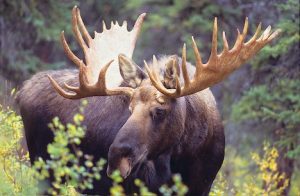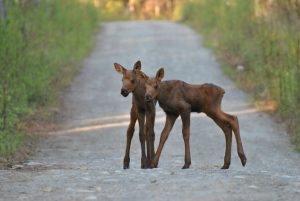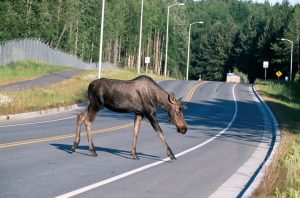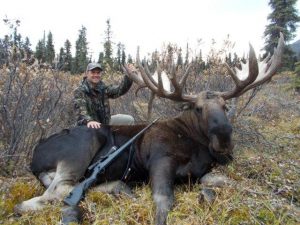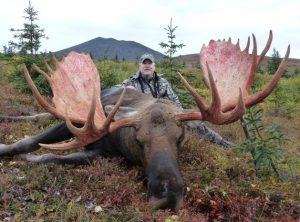Alaskan Moose
The largest extant subspecies of the deer family along with the Chukotka moose, the Alaska moose inhabits most of Northwestern North America. While the males have antlers, like many other deer species, they lose their antlers around December & January, and regain them during the spring.
Scientific Classification
| Kingdom | Animalia |
| Phylum | Chordata |
| Class | Mammalia |
| Order | Artiodactyla |
| Family | Cervidae |
| Genus | Alces |
| Species | A. alces |
| Scientific Name | Alces alces gigas |
Quick Information
| Other Names | Giant Moose, Alaska Moose, Elk (in Europe) |
| How big are they | Males (bulls) average height at shoulders: 6.9ft (2.1m) Females (cows) average shoulder height: 5.9ft (1.8m) Average Male Weight: 1,399lb (634.5kg) Average Female Weight: 1,054lb (478kg) |
| Color | Black to grayish-brown; juveniles have reddish-brown coloring on the pelage |
| Distribution | Alaska to western Yukon |
| Where do they live | Boreal and Deciduous forests |
| Communication | Not a very vocal species, most vocalizations occur during the rut; females make long, vibrating moaning call after attaining estrus. Males make grunting noises during mating or before fights. Both sexes make a guttural roaring sound as a threat or warning. They also communicate through scent-marking |
| Lifespan | Up to 16 years |
| Diet | Equisetum, pond weeds, sedges and grasses in spring, leaves of willow, birch and aspen in summer, and birch, willow and aspen twigs during the fall and winter |
| Adaptations |
|
| Breeding Season | Late August to Early October |
| Gestation Period | 230 days |
| Number of Offspring | 1; twins may be born |
| Diseases | Chronic Wasting Disease |
| Predators | Bears, wolves |
| IUCN Conservation Status | Least Concern |
Behavior
Alaskan moose are solitary animals, congregating only during the mating season. They become rather aggressive during this period, and attack any creature that startles it.
Mating & Reproduction
Fights over mating rights between two males are very common during the rut with the defeated party having to wait another year for his turn.
Life-cycle
At birth, calves have a weight of around 28lb (12.7kg), but they grow rapidly and weigh as much as 10 times that number within 5 months. They are weaned at around the same time the mother is ready to breed again. At around 10-11 months, the juveniles leave their mothers and start to fend for and feed by themselves. Females reach sexual maturity at 28 months.
Interesting Facts
- The antlers of the male Alaskan moose are the largest in the deer family.
- The Alaskan moose is widely hunted throughout its range and its meat is considered a delicacy in those snow-laden regions.
- The antlers of two fighting bulls sometimes get locked, and they eventually starve to death.
References
Published on October 13th 2016 by Sudipto Chakrabarti under Coniferous Forest Animals.
Article was last reviewed on 9th May 2023.


